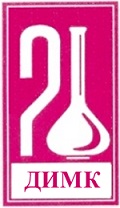Abstract:
When designed to the seismic load effects, reinforced concrete walls connected by slabs without coupling beams are usually considered cantilever walls. Several recent studies indicated that slabs themselves could provide strong coupling in some cases, and the walls could respond differently from cantilever walls. To study the slab-to-wall piers interaction, a shake table test of the half-scale three-story specimen was conducted within HORIZON 2020 SERA-TA project. The specimen consisted of four rectangular walls linked by three slabs. It was subjected to a series of seismic excitations of increasing intensity. In the last three tests, the nonlinear response of the slabs and wall piers was observed.
At the strong seismic excitations, one pier was subjected to strong tensile, while the adjacent pier was subjected to strong compression forces. The crack pattern of piers was asymmetric and different from the cross-shaped damage pattern, typical for cantilever walls.
The coupling of wall piers provided by slabs was considerably stronger than it was expected. The share of the overturning moment resisted by the frame action induced by the slabs was more than 50%. All slabs were fully activated and significantly damaged. Their damage was primarily flexural. The effective width of slabs was equal to their total width.
Article status:
Published
Journal number:
2021-04


